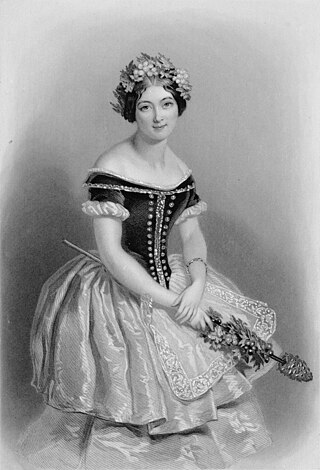
Giselle, originally titled Giselle, ou les Wilis, is a romantic ballet in two acts with music by Adolphe Adam. Considered a masterwork in the classical ballet performance canon, it was first performed by the Ballet du Théâtre de l'Académie Royale de Musique at the Salle Le Peletier in Paris on 28 June 1841, with Italian ballerina Carlotta Grisi as Giselle. It was an unqualified triumph. It became hugely popular and was staged at once across Europe, Russia, and the United States.

Frederic Franklin, sometimes also called "Freddie", was a British-American ballet dancer, choreographer and director.
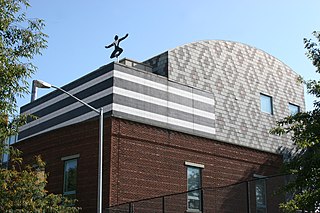
Dance Theatre of Harlem (DTH) is an American professional ballet company and school based in Harlem, New York City. It was founded in 1969 under the directorship of Arthur Mitchell and later partnered with Karel Shook. Milton Rosenstock served as the company's music director from 1981 to 1992. The artistic director has been Robert Garland since 2022. The DTH is renowned for being both "the first Black classical ballet company", and "the first major ballet company to prioritize Black dancers".

Aleksandra Dionisyevna Danilova was a Russian-born prima ballerina, who became an American citizen. In 1989, she was recognized for lifetime achievements in ballet as a Kennedy Center Honoree.
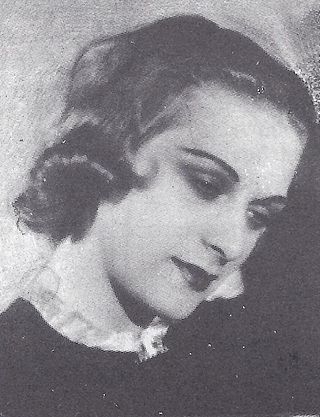
Mia Slavenska, née Čorak was a Croatian-American soloist of the Russian Ballet of Monte Carlo in 1938–1952 and 1954–1955.
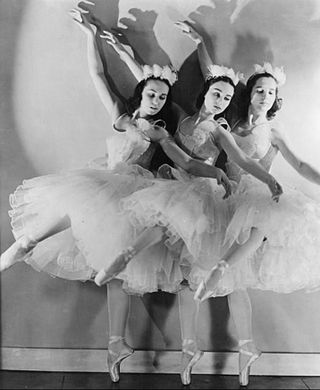
The company Ballets Russes de Monte-Carlo was formed in 1932 after the death of Sergei Diaghilev and the demise of Ballets Russes. Its director was Wassily de Basil, and its artistic director was René Blum. They fell out in 1936 and the company split. The part which de Basil retained went through two name changes before becoming the Original Ballet Russe. Blum founded Les Ballets de Monte Carlo, which changed its name to Ballet Russe de Monte Carlo when Léonide Massine became artistic director in 1938. It operated under this name until it disbanded some 20 years later.
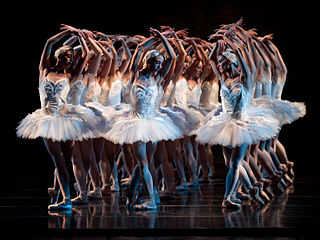
The Cincinnati Ballet is a professional ballet company founded as Cincinnati Civic Ballet in 1958, based in Cincinnati, Ohio, United States. After being registered as a company, it had its first performance in 1964.
John Taras was an American ballet master, repetiteur, and choreographer.
The Original Ballet Russe was a ballet company established in 1931 by René Blum and Colonel Wassily de Basil as a successor to the Ballets Russes, founded in 1909 by Sergei Diaghilev. The company assumed the new name Original Ballet Russe after a split between de Basil and Blum. De Basil led the renamed company, while Blum and others founded a new company under the name Ballet Russe de Monte-Carlo. It was a large scale professional ballet company which toured extensively in Europe, Australia and New Zealand, the United States, and Central and South America. It closed down operations in 1947.
Tschaikovsky Piano Concerto No. 2, also titled Ballet Imperial, is a ballet choreographed by George Balanchine to Tchaikovsky's Piano Concerto No. 2. Ballet Imperial was choreographed for American Ballet Caravan's 1941 South American tour, and was aimed at showing that the Americans were capable of the classical ballet traditions. The ballet pays tribute to Tchaikovsky, the classical ballet choreographer Marius Petipa, and Imperial Saint Petersburg, where Balanchine received his ballet training. The ballet featured academic steps and alludes to Imperial Russia through the costumes and scenery. Ballet Imperial premiered on June 25, 1941, at Teatro Municipal, Rio de Janeiro.

Jocelyn Vollmar was an American ballerina, known for her career with the San Francisco Ballet.

Concerto Barocco is a neoclassical ballet choreographed by George Balanchine to Bach's Concerto for Two Violins. Danced by a cast of eleven, the ballet is completely plotless, and according to Balanchine, "has no "subject matter" beyond the score which it is danced and the particular dancers who execute it". The ballet was made for the American Ballet Caravan's 1941 South American tour, and premiered on June 27, 1941, at Teatro Municipal, Rio de Janeiro. The ballet has entered the repertories of many ballet companies, including Balanchine's New York City Ballet.
Danses concertantes is the title of a work for chamber orchestra written in 1941–42 by Igor Stravinsky, commissioned by Werner Janssen. Stravinsky's music has been used for eponymous ballets by numerous choreographers attracted by its danceability.

Nathalie "Natasha" Krassovska (1918–2005) was a Russian born prima ballerina and teacher of classical ballet most noted for her work with the Ballet Russe de Monte Carlo. Following her decades-long career, she moved to the U.S., where she founded the Krassovska Ballet Jeunesse. Krassovska taught, choreographed and performed until her death.
Aminah L. Ahmad, formerly known professionally as Llanchie Stevenson, is an American ballet dancer who was the first African-American dancer at Radio City Music Hall Ballet Company, the first African-American female dancer at the National Ballet of Washington, and an original company member and former principal dancer with Dance Theatre of Harlem. She retired from dancing upon her conversion to Islam.
Stephanie Renee Dabney was an American dancer who performed as a prima ballerina with Dance Theatre of Harlem from 1979 through 1994. Dabney is best known for her performances in John Taras' The Firebird, which she performed all over the world, as well as at the opening ceremony of the 1984 Summer Olympics in Los Angeles.
Karen Brown is an American ballerina, educator, répétiteur, ballet mistress, and director. She is noted for her long career as a principal dancer with the Dance Theatre of Harlem and as the first African-American woman to lead a ballet company.

Calvin Royal III is an American ballet dancer. He is the third black dancer to be a principal dancer with the American Ballet Theatre.
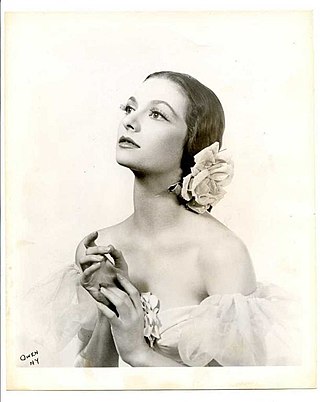
Mary Ellen Moylan was an American ballet dancer. She was one of the first students of George Balanchine's School of American Ballet, and made her New York stage debut in 1942. She had danced with Ballet Russe de Monte Carlo, Ballet Society, Ballet Theatre, Metropolitan Opera Ballet, and on Broadway. She was best known for performing Balanchine's works, and was described as "the first great Balanchine dancer". She retired from performing in 1957.











